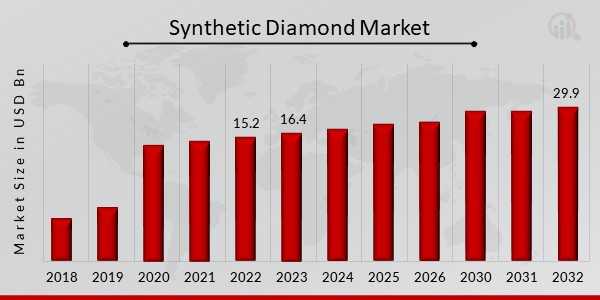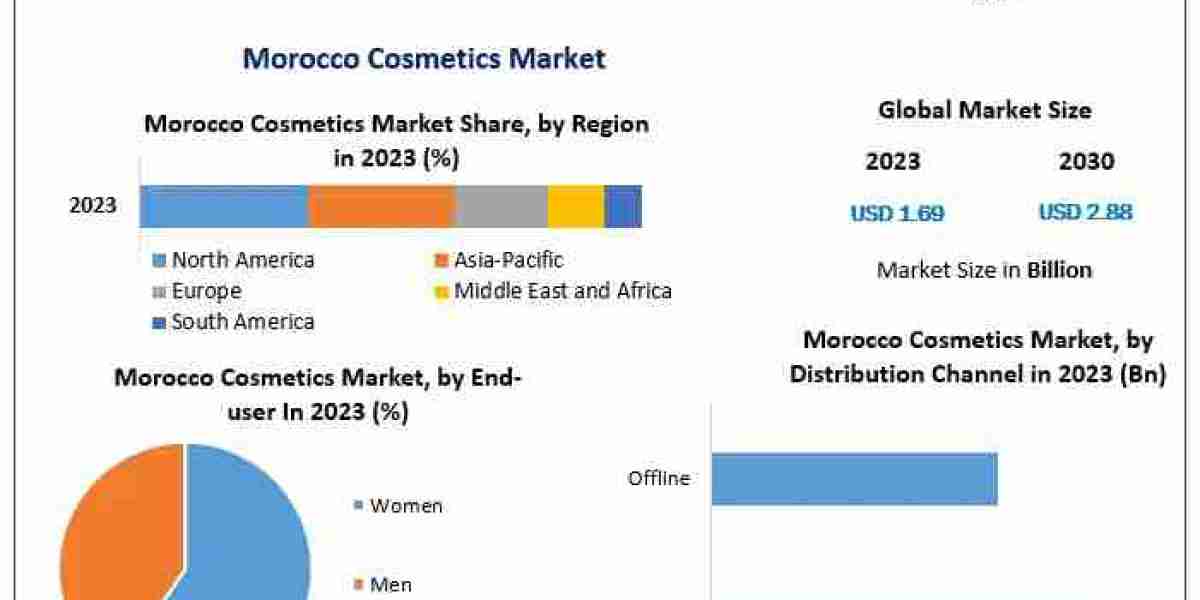In the realm of gemstones, diamonds have always captivated human fascination with their unparalleled brilliance and timeless elegance. Traditionally, these precious stones were formed deep within the Earth's mantle under extreme pressure and temperature over millions of years. However, advancements in technology have paved the way for the creation of synthetic diamonds, revolutionizing the diamond industry. The Synthetic Diamond Market has witnessed a remarkable surge in recent years, driven by technological innovations, shifting consumer preferences, and sustainability concerns.

The Synthetic Diamond Market is estimated at US$ 29.9 billion in 2032 and is forecasted to increase rapidly at a CAGR of 7.80% from 2024 to 2032
Synthetic diamonds, also known as lab-grown or cultured diamonds, are created in controlled laboratory environments that mimic the natural diamond formation process. These diamonds possess identical chemical composition, crystal structure, and optical properties to natural diamonds, making them indistinguishable to the naked eye. However, what sets synthetic diamonds apart is their ethical and environmental advantages.
One of the primary drivers behind the growing popularity of synthetic diamonds is their ethical sourcing. Unlike natural diamonds, which often have a controversial history associated with issues like unethical labor practices and conflict financing, synthetic diamonds are produced ethically in laboratory settings. This transparency and traceability appeal to an increasingly conscientious consumer base that values ethical and sustainable products.
Furthermore, synthetic diamonds companies offer a more sustainable alternative to their mined counterparts. The diamond mining industry has been criticized for its environmental impact, including habitat destruction, water pollution, and carbon emissions. In contrast, lab-grown diamonds require significantly less energy and water to produce, emit fewer greenhouse gases, and do not involve the destruction of natural habitats. As the global focus on sustainability intensifies, synthetic diamonds emerge as a compelling choice for environmentally conscious consumers and businesses alike.
In addition to their ethical and environmental advantages, synthetic diamonds offer several practical benefits that contribute to their burgeoning market demand. One such advantage is their affordability. While natural diamonds are subject to the forces of supply and demand, leading to fluctuating prices, synthetic diamonds offer a more stable and predictable pricing structure. This accessibility makes them an attractive option for a broader segment of consumers, including millennials and Gen Z, who prioritize value and affordability.
Moreover, synthetic diamonds offer unparalleled versatility in terms of customization and design possibilities. Manufacturers can precisely control the characteristics of synthetic diamonds, including size, shape, color, and clarity, to meet the specific requirements of customers. This flexibility opens up new avenues for innovation in jewelry design, industrial applications, and emerging technologies such as quantum computing and high-power electronics.
The US synthetic diamond market has experienced rapid growth and innovation in recent years, fueled by investments in research and development, technological advancements, and strategic partnerships across the globe. Major players in the industry are continuously pushing the boundaries of what is possible with synthetic diamonds, exploring new applications and markets to unlock their full potential.
Despite the remarkable progress made by the synthetic diamond market, challenges remain on the horizon. One such challenge is the need to overcome lingering perceptions and misconceptions surrounding synthetic diamonds. While acceptance and awareness of lab-grown diamonds are growing, there is still work to be done to educate consumers about their benefits and dispel myths about their quality and authenticity.
In conclusion, the synthetic diamond market represents a shining example of innovation, sustainability, and ethical practices in the jewelry and technology industries. As consumers increasingly prioritize transparency, sustainability, and value, synthetic diamonds are poised to play a prominent role in shaping the future of the diamond industry. With continued advancements in technology and growing consumer acceptance, the synthetic diamond market is set to sparkle brighter than ever before.
About Market Research Future:
Market Research Future (MRFR) is a global market research company that takes pride in its services, offering a complete and accurate analysis of diverse markets and consumers worldwide. Market Research Future has the distinguished objective of providing optimal quality research and granular research to clients. Our market research studies by products, services, technologies, applications, end users, and market players for global, regional, and country level market segments, enable our clients to see more, know more, and do more, which help answer your most important questions.
Contact:
Market Research Future (Part of Wantstats Research and Media Private Limited)
99 Hudson Street, 5Th Floor
New York, NY 10013
United States of America
+1 628 258 0071 (US)
+44 2035 002 764 (UK)
Email: sales@marketresearchfuture.com
Website: https://www.marketresearchfuture.com


